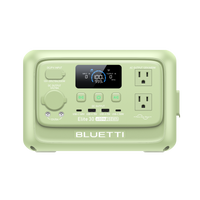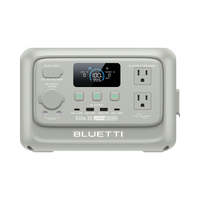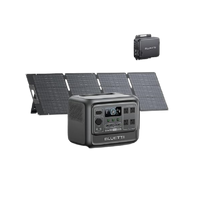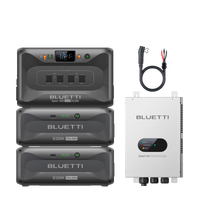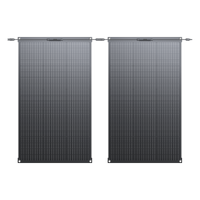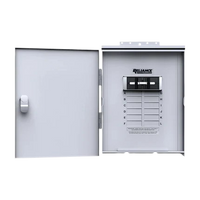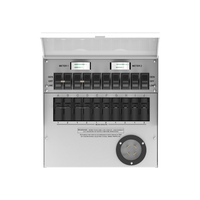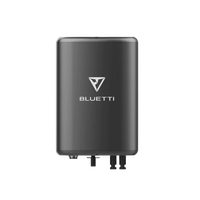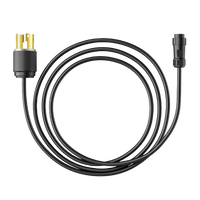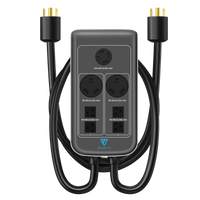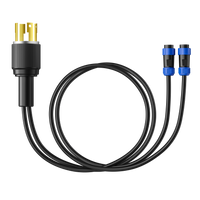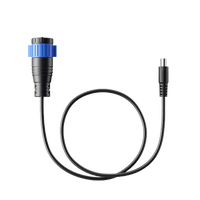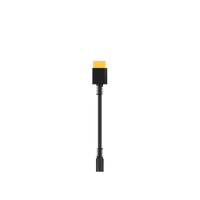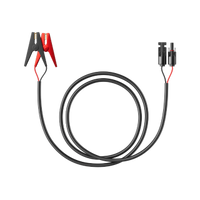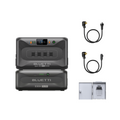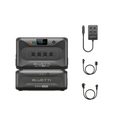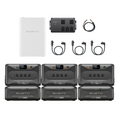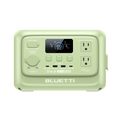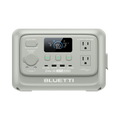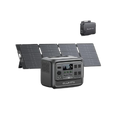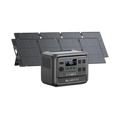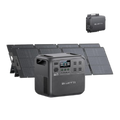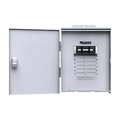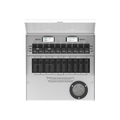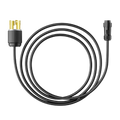The everyday Canadian household is a beehive of buzzing appliances, blinking lights, and all kinds of accessories that are being fed electricity measured in kilowatt-hours (kWh). However, how much energy is needed to make this a daily activity? In this post, we keep an eye on the average kWh usage in all the wide Canadian regions-from the busy city to the tranquil countryside.
Through the analysis of the issues that underpin these numbers, eyes will be drawn to the standard energy footprint of an average Canadian home that is approximately 11,135 kWh in a year. Along the way, we’ll not only show the complexities of energy use but will also offer tips for households to manage and lower their use, which will hopefully lay the foundation for a more green future.
Electricity Use at Home
In Canada, an average home consumes 11,135 kWh of energy on an annual basis. Yet, this rating may vary across the different provinces. An Alberta household uses 7,200 kWh on average, which is lower than the consumption of natural gas that balances out the usage. In Ontario, an average household uses around 9,500 kWh electricity annually.
Energy consumption by domestic appliances differs from device to device. According to Toronto Hydro, it is the large space cooling appliance that consumes the most energy in a house- the central air conditioner. Aside from these, energy guzzlers that use large amounts of energy include water heaters, portable electric heaters, and ovens. For example, a water heater of a family of four will consume an average of 415 kWh per month, given that it is used for 118 hours per month. On the other side, a 14-watt CFL bulb, if left on for 24-hours every day will use 10 kWh at the end of the month. Hence, besides turning off lights to save power, reducing showering time would be more impactful for energy conservation.
In case of apartments, a 950 sq. ft condominium uses approximately 5,605 kWh of electricity per year, which equals to the usage of 467 kWh per month.
Related articles: Portable Solar Panels as an Alternative to Electricity
Best Solar Battery Backup System for Home in Canada 2024
How is Electricity Priced in Canada?
Canada's electricity charges are not a fixed number and can vary from one province to another. This inequality is mainly caused by the particular market structure and the type of how electricity is generated which is different in every region.

From the standpoint of affordability, British Columbia, Manitoba, and Quebec boast the country's lowest electric rates since they all possess abundant hydroelectric resources.
Contrasting from above, Alberta makes use of a free market mechanism when it comes to electricity pricing. Here power cost is determined by the interplay of supply and demand that leads to price fluctuations.
The province of Ontario has designed a hybrid electricity market , with features of both regulated and non-regulated systems.
However, electricity pricing in the remaining provinces and territories of Canada is set by the regulatory authorities. Such bodies set prices based on a variety of parameters such as the cost of the generation and the transmission, and the necessity to provide the utility providers with a fair rate of return. This method helps provide a little bit of stability and regularity in electricity costs.
What Costs the Most on Your Electric Bill?
For your electricity bill, some components are more influential than others. Among all the factors that condition your electricity consumption, the principal ones are your home's heating and cooling systems through which approximately 40% of total electricity is consumed. Among other energy consumers are such appliances as washing machines, dryers, and kitchen appliances.
This is the case even with “energy efficient” appliances such as the refrigerator and the freezer operating round the clock as this could significantly affect your electricity bill due to their incessant operation.
Electronic equipment such as laptops and televisions may not seem to consume massive amounts of power when using each of them on an individual basis, but their overall energy consumption can build up over the time.
The electric cars which have gained ground recently have added a new electricity consumption source to the household electricity usage. When you are charging these cars at home you are definitely going to see an increase in your overall electricity usage.
Let's take a look at a typical home's energy-consuming categories:
- Climate Control (Heating and Cooling): Over 40%
- Water Heating: 15% and above.
- Household Appliances: More than 14%.
- Lighting: Around 10%
- TV and Media Equipment: The figure is around 5%.
Such figures are averages and the actual level of energy consumption of a home depends on the appliances used and how they are operated.
Common Causes for High Electricity Bills
There are a number of overlapping reasons that result in expensive electricity bills. One great issue that surfaces is the difficulty in keeping a good room temperature in older homes. These houses usually possess outdated or deficient insulation systems in the walls, ceiling, and floor which forces them to lose a significant amount of heat. In addition, they may have windows that are a single panel being outdated and thus having drafts, hence, resulting in heat loss and increased electricity costs.

The next factor of general inefficiency in households is the use of older appliances that are not as energy efficient as the new ones. Although the original cost of upgrading your home and appliances may appear high at first, the long-term savings on your electricity bill can turn out to be quite economical.
On the last thought, you should always update your home insurance policy during any reconstruction or renovations process to make sure that it covers what you want to be covered against. Such modifications may result in a decrease or increase in value of your property and potential factors that could make it risky.
Main Factors that Affect Your Energy Consumption
- Number of Occupants: The amount of power that a house consumes relies significantly on the number of individuals living in it. An increased number of residents equates to an increased use of appliances, lights on, and more heating and cooling needed; subsequently, greater energy consumption is expected.
- Home Size: Domestic space is one of the factors of great significance. With the larger size of the house, comes the need for more power than with the smaller one.
- Energy Efficiency: This becomes a crucial factor when we look at the amount of electricity consumed by the building. Houses which have high energy productivity, like those with the best insulation and energy-efficient appliances, need smaller amounts of energy to conduct various functions.
- Regional Climate: Local climate of the region at which the house is situated also is an influential factor. In colder regions homes use more energy for heating while in warm areas homes use more for cooling.
- Electricity and Natural Gas Consumption: The two, which are the integral part of energy consumed within the household, account to the overall energy usage. This incorporates the use of electric and gas appliances, illuminating systems and heater systems.
How to Save Your Electricity Cost?
Efficient utilization of electricity implies in the first place understanding the factors that affect electric power consumption and then controlling them. Here are some strategies:
Understanding Peak-Hour Usage: The electricity prices are different for several provinces according to the moment at peak, mid-peak and off-the-peak hours. Usually, off-peak hours - a daytime when the lowest rates are available - bring the costs that are up to 50% less than those of peak-hour usage. The most effective way to save electricity bills is to perform the most energy consuming tasks like laundry during off-peak hours.
Upgrading Home Energy Efficiency: Replace old gadgets with power-efficient ones to achieve that. You can also do wide renovations like installing new windows.
Having put in place such measures, you can go a step further and invest in solar generator kits which will help further slash your electricity costs. Here are two such kits.

At $5,596.00, the device features a 3,000 wattage Alternating Current Pure Sine Wave Inverter. It also has a surge capacity of 6,000W. In addition, it comes with 3,072Wh capacity, which is also expandable up to 12,288Wh by using 4 B300s. Furthermore, the LiFePO₄ Battery provides more than 3,500 cycles up to 80%. Another excellent aspect is that the kit features 7 ways to recharge and has a peak solar input of 2400W. Lastly, priced at C$599.00, the PV200 panel anel is a high-productivity, long-lasting device. It's equipped with monocrystalline daylight cells. Apart from the ETFE coating, it supports up to 23.4 percent efficiency.

This module is on the market for $2,896.00. It consists of a 2000W Alternating current Pure Sine Wave Inverter with a peak of 4,800W and a 2,000Wh capacity. Other than that, the LifePO₄ battery guarantees over 3,500 life cycles to 80 percent. The kit also comes with 7 ways to recharge and the maximum solar input of 700W. Finally, the additional BLUETTI PV120 Solar Panel, selling for C$399.00, contains monocrystalline solar cells with a maximum efficiency of 23.4% and a long-lasting ETFE coating.
Final Thoughts
In summary, understanding electricity consumption is essential for Canadian residents. Factors like the number of the occupants, house size, energy efficiency, regional climate, electricity consumption as well as natural gas usage play a key role in energy consumption. Through the knowledge of all these factors and implementation of energy saving methods, households can achieve a considerable cut in electricity costs, and their efforts will contribute to the environment conservation.













